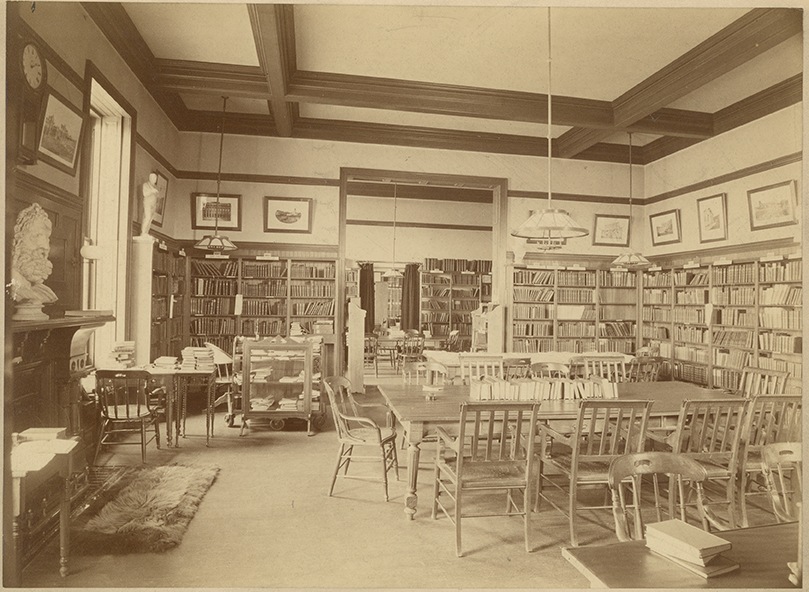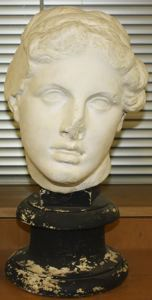While the High Victorian Gothic form and ornament of Taylor Hall’s exterior embodied the Anglo-Saxonist goals expressed in the curriculum, the interior decorations tied academic life firmly to Classical culture. By the late 1880s, in an implicit rejection of Quaker guardedness, the classrooms, library, and hallways were richly decorated with photographs and plaster cast reproductions of Greek, Roman, and European art and architecture. These decorations visually immersed students in the Greco-Roman tradition. Classical imagery was intended to cultivate in students a sense of superiority based in an education that celebrated white European history, culture, and exceptionalism.

Library in Taylor Hall, 1893
Facsimile of photograph
Bryn Mawr College Archives, PAB_Taylor_009

Plaster
14 23/32 x 6 1/2 in. (37.4 x 16.5 cm)
Bequest of M. Carey Thomas, President of Bryn Mawr College, 1894-1922
Bryn Mawr College Special Collections, 2014.4.14
Similar plaster casts of famous Greco-Roman sculptures were displayed throughout Taylor Hall.
